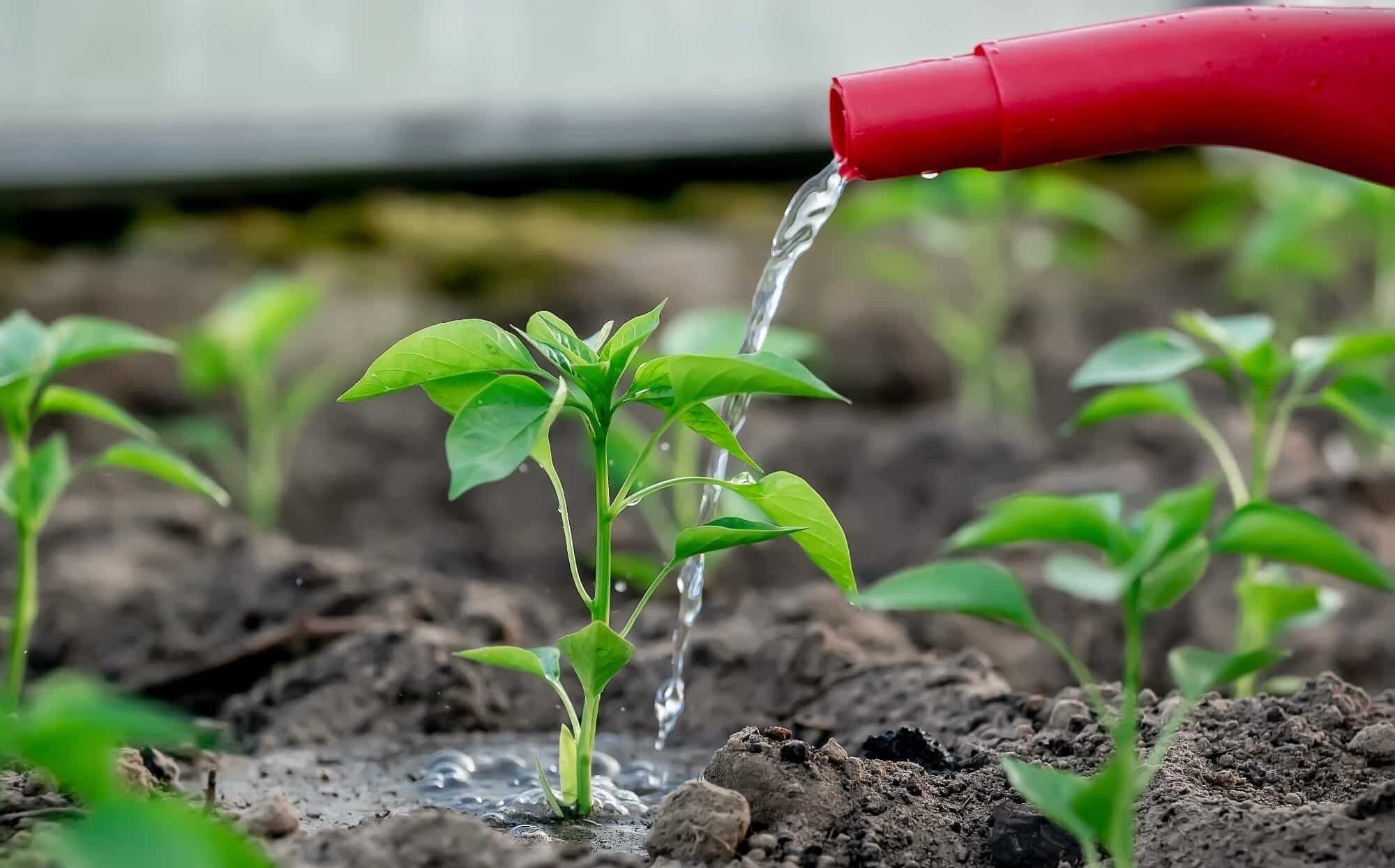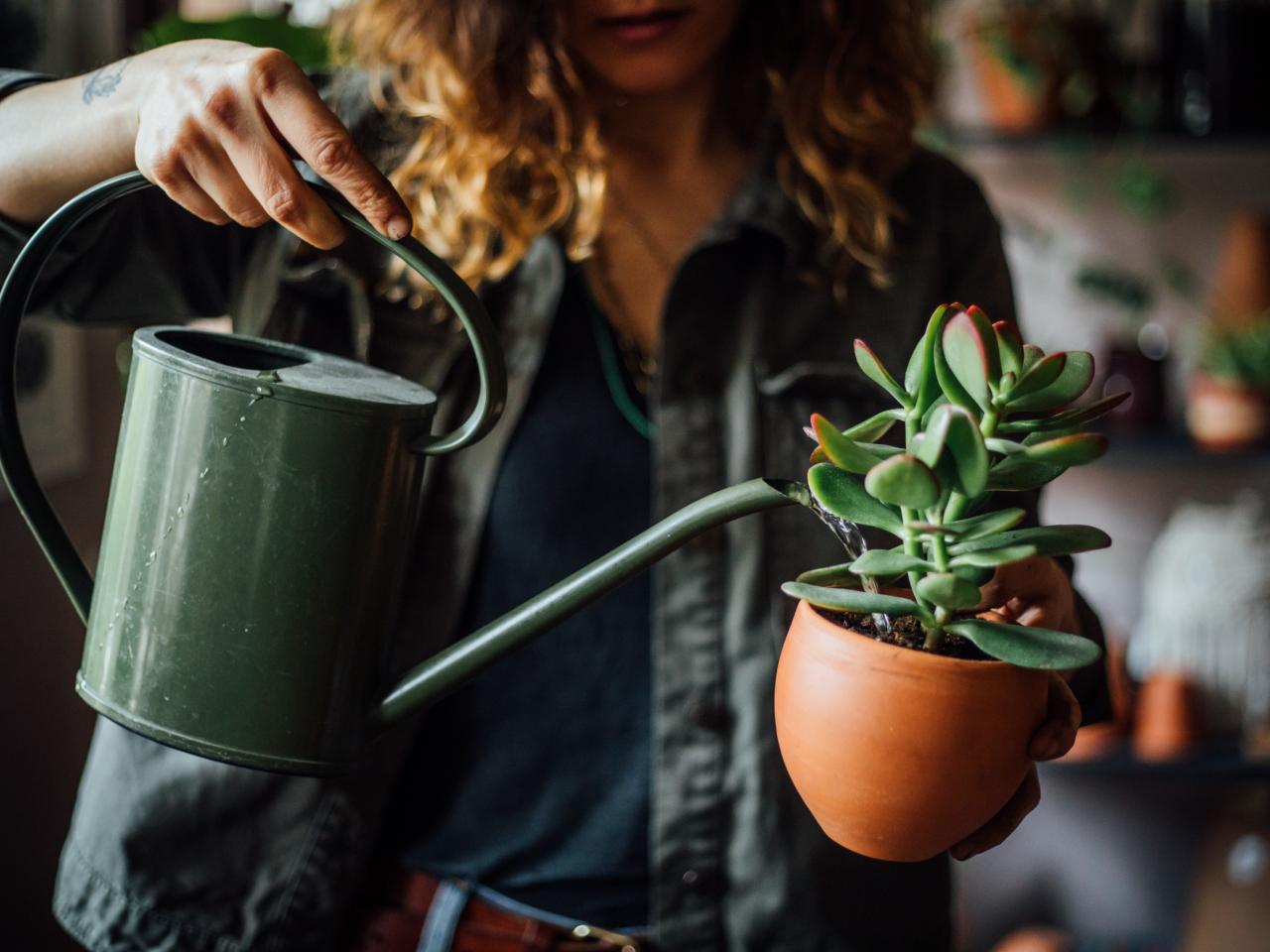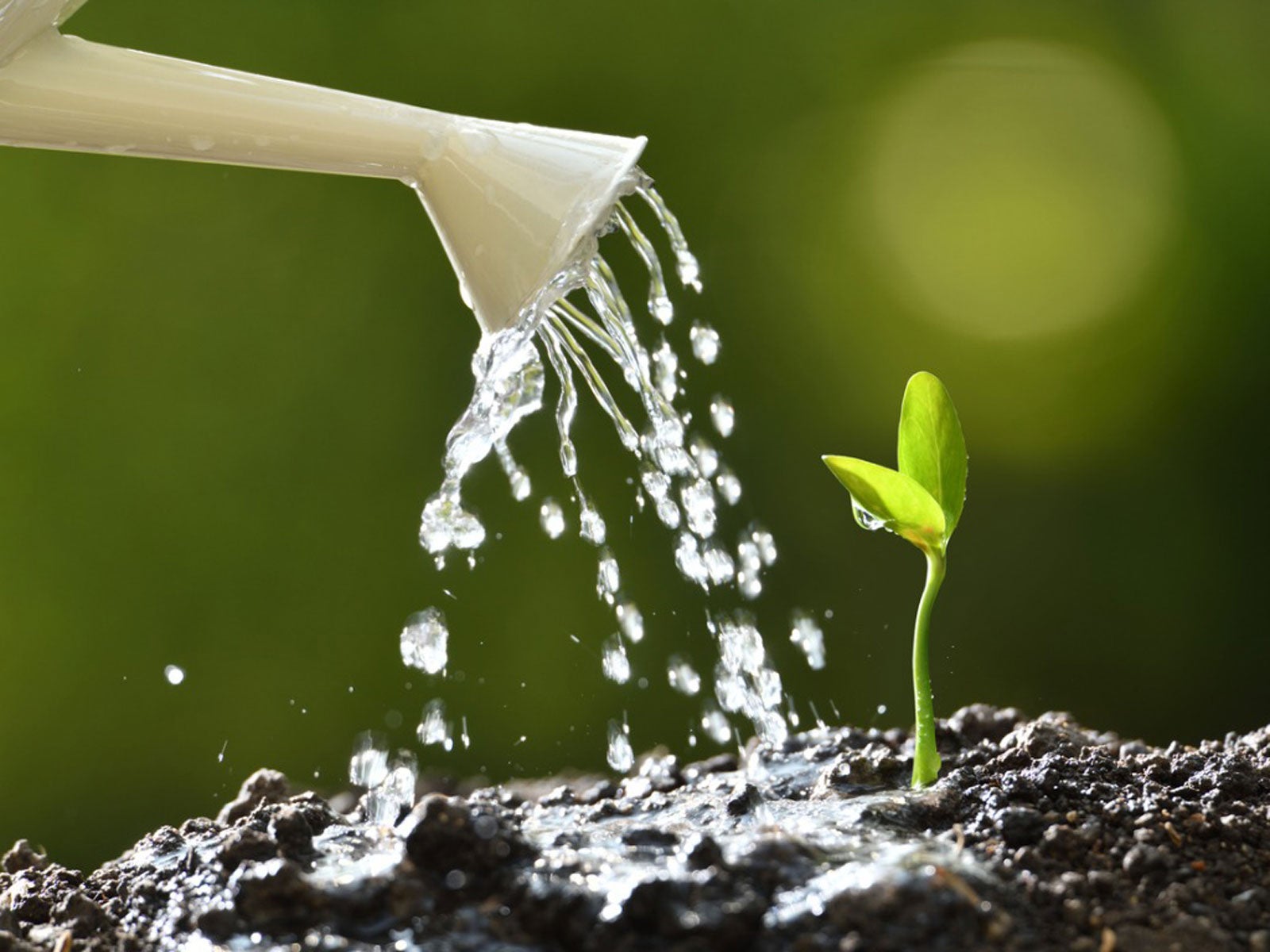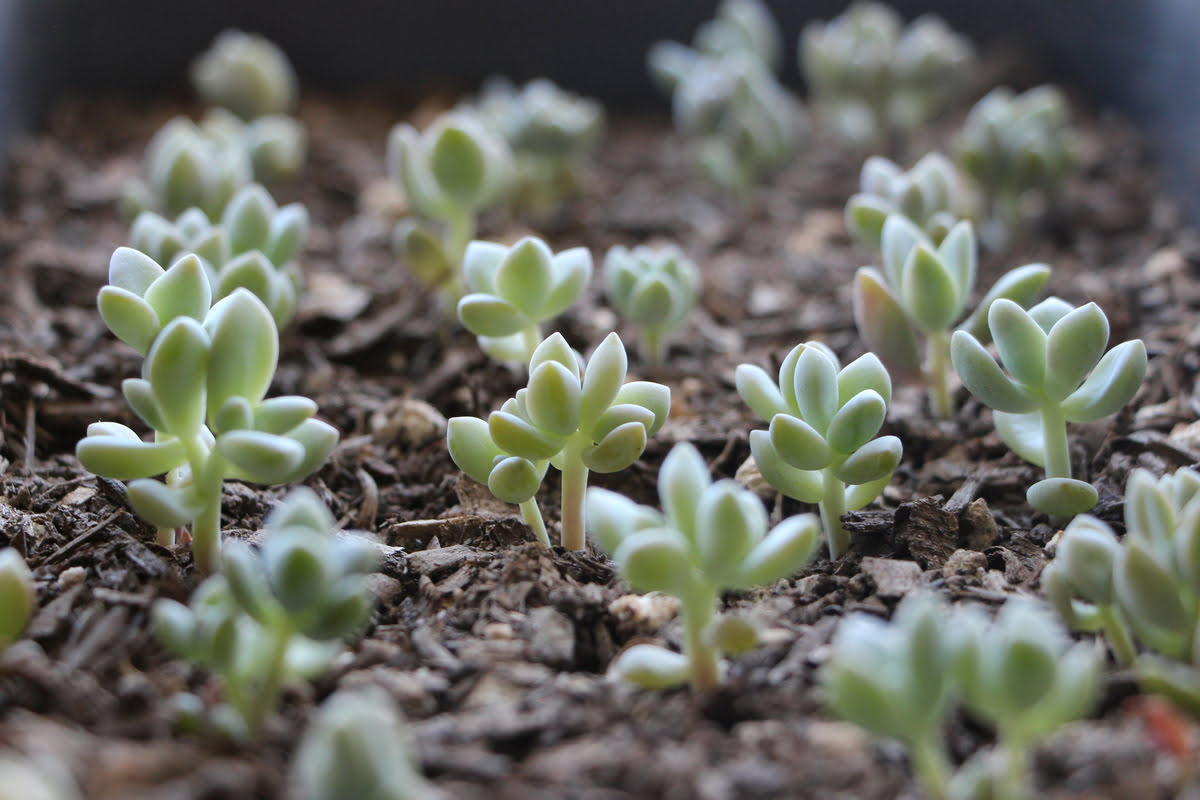Home>Gardening Techniques>Plant Care>How Often To Water Vegetables
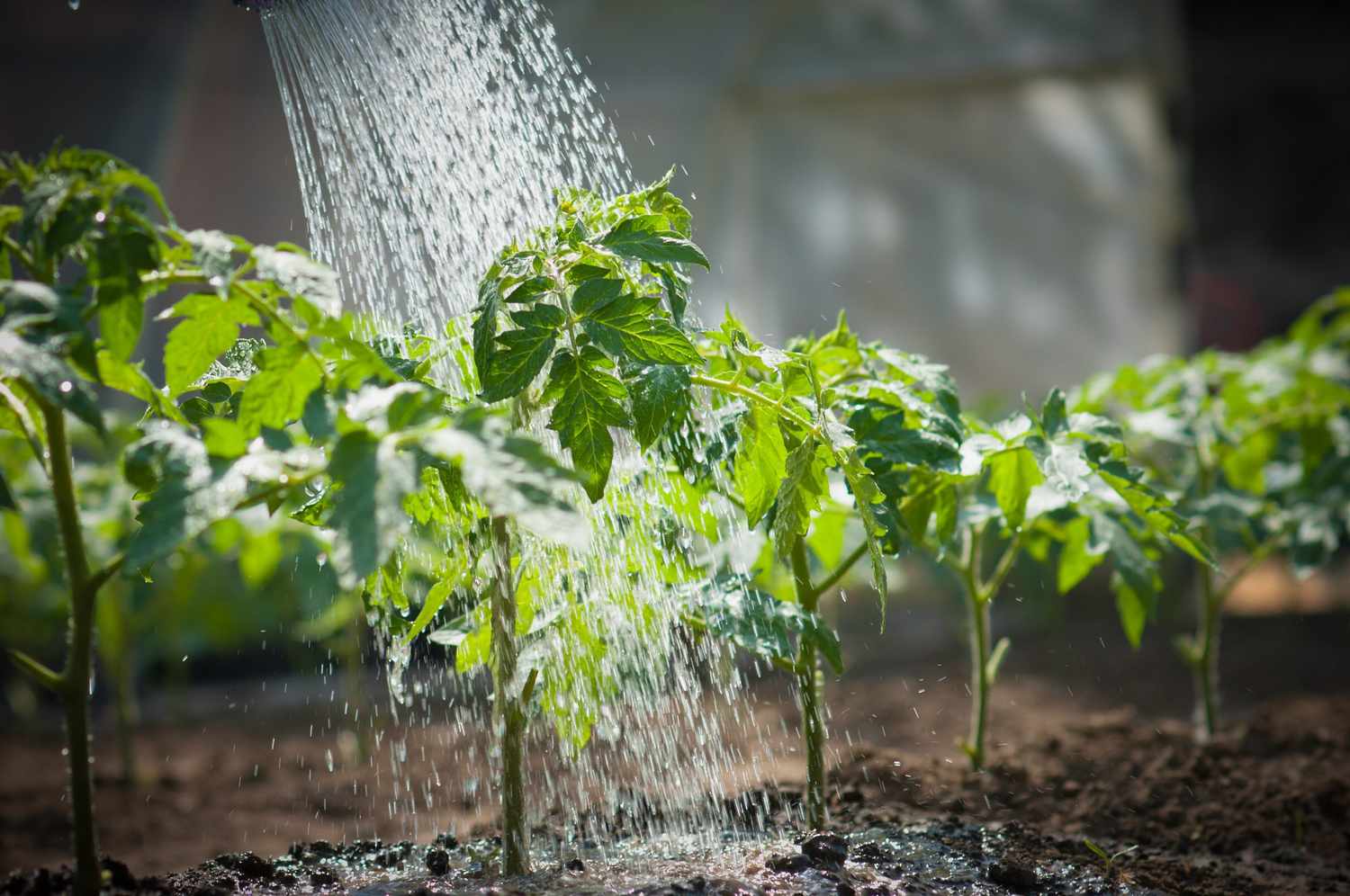

Plant Care
How Often To Water Vegetables
Modified: January 22, 2024
Learn the best plant care practices for watering vegetables. Find out how often you should water your vegetable plants to ensure healthy growth and abundant harvests.
(Many of the links in this article redirect to a specific reviewed product. Your purchase of these products through affiliate links helps to generate commission for Chicagolandgardening.com, at no extra cost. Learn more)
Table of Contents
Introduction
Proper watering is crucial for the health and vitality of any vegetable garden. Without an adequate water supply, plants can become stressed, leading to slower growth, wilting, and even death. However, finding the right balance when it comes to watering can be a challenge. How often should you water your vegetables? It depends on various factors, such as the type of vegetable, weather conditions, soil type, and stage of growth.
Watering frequency is a critical aspect of plant care. Too little water can cause plants to wither and die, while excessive watering can lead to root rot and other issues. By understanding the factors that affect watering and learning the signs of both underwatering and overwatering, you can ensure that your vegetables receive the appropriate amount of moisture to thrive.
Every vegetable has specific water requirements, and it is important to tailor your watering routine accordingly. Some vegetables, like lettuce and spinach, prefer consistently moist soil, while others, such as tomatoes and peppers, prefer a more moderate watering schedule. By familiarizing yourself with the needs of each vegetable you are growing, you can provide optimal growing conditions and maximize their yield.
In this article, we will explore the various factors that affect watering frequency, discuss the signs of both underwatering and overwatering, provide general guidelines for watering vegetables, and offer recommendations for specific vegetable types. By following these tips and adopting appropriate watering methods, you can foster healthy growth and bountiful harvests from your vegetable garden.
Factors Affecting Watering Frequency
Several factors come into play when determining how often to water your vegetables. Understanding these factors will help you make informed decisions and ensure that your plants receive the right amount of water for optimal growth:
- Weather conditions: The prevailing weather conditions greatly influence the watering needs of your vegetable garden. During hot and dry periods, more frequent watering may be required to prevent moisture stress. Conversely, cooler or rainy periods may reduce the frequency of watering.
- Soil type: The type of soil in your garden affects its water-holding capacity. Sandy soils drain quickly, requiring more frequent watering, while clay soils hold water for longer periods and may require less frequent watering. Amending your soil with organic matter can improve its moisture retention capabilities.
- Vegetable stage of growth: Different stages of growth have different water requirements. Young seedlings, for example, have shallow roots and need more frequent, lighter watering than mature plants with well-established root systems.
- Container gardening: If you are growing vegetables in containers or raised beds, they tend to dry out more quickly than plants in the ground. Regular monitoring and more frequent watering may be necessary to keep the soil consistently moist.
- Microclimate: The specific conditions in your garden, such as sun exposure and wind patterns, can impact the rate of evaporation and soil moisture levels. Pay attention to the unique characteristics of your garden and adjust your watering schedule accordingly.
By considering these factors and observing the specific needs of your vegetable plants, you can determine the ideal watering frequency for your garden. It is important to strike a balance between providing enough water to keep the plants healthy and avoiding overwatering, which can lead to root rot and other issues.
Understanding Vegetable Watering Needs
Each vegetable has unique watering needs based on its characteristics and growth requirements. Understanding these needs will help you provide the right amount of water for optimal plant health. Here are some general guidelines for watering vegetables:
- Maintain consistent moisture: Most vegetables prefer a consistently moist soil. This means that the soil should not be allowed to dry out completely between waterings. Aim for a moisture level that feels like a tightly squeezed sponge.
- Early morning watering: It is recommended to water your vegetables in the early morning. This allows the leaves to dry off before evening, reducing the risk of fungal diseases. Morning watering also ensures that plants have enough moisture to withstand the heat of the day.
- Avoid overhead watering: Watering from overhead can increase the risk of fungal diseases. Instead, use watering methods that target the base of the plants, such as drip irrigation or a soaker hose. This helps to keep the foliage dry and directs water to the roots where it is needed most.
- Deep watering: Watering deeply encourages the development of a strong root system. Instead of light, frequent watering, which promotes shallow root growth, water your vegetables deeply, allowing the water to penetrate several inches into the soil. This helps the roots to grow deeper, providing better access to nutrients and water.
- Avoid overwatering: Overwatering can lead to root suffocation, nutrient leaching, and the development of fungal diseases. It is important to monitor the moisture levels of your soil and avoid excessive watering. One way to check moisture levels is to stick your finger about an inch into the soil. If it feels moist, you can delay watering. If it feels dry, it’s time to water.
While these guidelines provide a good starting point, it’s important to remember that every vegetable has specific watering preferences. For example, leafy greens like lettuce and spinach prefer consistently moist soil, while root vegetables like carrots and radishes prefer a slightly drier environment. It’s important to research the watering needs of each vegetable you are growing to ensure their specific requirements are met.
Understanding the watering needs of your vegetables and implementing appropriate watering practices will not only promote healthy plant growth but also contribute to higher yields and better tasting produce.
Signs of Underwatering
Underwatering can have detrimental effects on vegetable plants, leading to stunted growth and poor yield. It is important to recognize the signs of underwatering so that you can take prompt action and provide the necessary moisture. Here are some common indicators of underwatering:
- Wilting: When plants do not receive sufficient water, they often begin to wilt. The leaves and stems may droop and appear limp, especially during the hottest part of the day. Wilting is a clear sign that the plants are in need of water.
- Dry soil: Underwatered plants often have dry soil. If you notice that the top layer of soil is consistently dry and the plants appear parched, it is a clear indication that they are not receiving enough water. You can check the moisture level by inserting your finger into the soil near the base of the plants.
- Yellowing of leaves: Another sign of underwatering is the yellowing of leaves. When plants lack water, they cannot carry out essential functions like nutrient absorption. The leaves may turn yellow or even brown, indicating stress and dehydration.
- Stunted growth: Underwatered plants often experience slow or stunted growth. Without sufficient water, the plants cannot access the necessary nutrients from the soil. As a result, they may appear smaller in size, with limited leafy growth and reduced fruit production.
- Drooping or curling leaves: In addition to wilting, underwatered plants may exhibit drooping or curling leaves. This is the plant’s way of conserving water by minimizing the exposure of leaf surfaces to sunlight. The leaves may appear crisp or brittle due to lack of hydration.
If you notice any of these signs, it is important to take action to address the issue. Start by thoroughly watering the plants, ensuring that the moisture reaches the root zone. Mulching the soil can also help to retain moisture and reduce evaporation.
Remember, it is always better to slightly underwater than overwater your vegetable plants. Regularly monitoring the soil moisture and responding promptly to signs of underwatering will help to prevent long-term damage and ensure the health and productivity of your vegetable garden.
Signs of Overwatering
While providing enough water is crucial for healthy plant growth, overwatering can be just as detrimental as underwatering. Excess water can lead to root rot, nutrient leaching, and the development of fungal diseases. It is important to be able to identify the signs of overwatering to prevent further damage to your vegetable plants. Here are some common signs to look out for:
- Wilting: Although it may seem contradictory, overwatered plants can also exhibit wilting symptoms. This is because excessive water in the soil can suffocate the roots, leading to poor nutrient uptake and oxygen deprivation.
- Yellowing leaves: Overwatered plants often develop yellowing leaves, especially on the lower parts of the plant. This is due to the accumulation of excess water, which disrupts nutrient absorption. The yellowing may progress to brown or black spots as the roots suffocate and rot.
- Mold or fungus growth: If your vegetable plants are constantly wet, you may notice the growth of mold, fungus, or algae on the soil surface or on the plant itself. This is a clear indication of excess moisture, which creates an ideal environment for fungal diseases to thrive.
- Root rot: Overwatering can lead to root rot, a condition where the roots become waterlogged and begin to decay. If you gently remove a plant from the soil and observe brown, slimy, or foul-smelling roots, it is likely that overwatering has caused root rot.
- Lack of new growth: Overwatered plants often show a lack of new growth. The excess water impedes the absorption of essential nutrients, causing the plant to become stagnant. You may observe stunted growth, with no new leaves or fruit development.
If you notice any of these signs, it is important to address the issue immediately. To prevent further damage, adjust your watering practices by allowing the soil to dry out before watering again. Improving drainage by amending the soil with organic matter and ensuring proper air circulation around the plants can also help to alleviate the effects of overwatering.
Remember, finding the right balance between too little and too much water is key to maintaining healthy vegetable plants. Regularly monitor the soil moisture and adjust your watering schedule accordingly to promote optimal growth and prevent the negative consequences of overwatering.
General Guidelines for Watering Vegetables
Watering your vegetables properly is essential for their overall health and productivity. While the watering needs of different types of vegetables may vary, there are some general guidelines that can help ensure adequate moisture without overwatering. Here are some tips to follow:
- Observe the soil: Regularly check the moisture level of the soil. Use your finger or a moisture meter to assess whether the soil is dry or damp. Avoid letting the soil completely dry out between waterings, but also avoid keeping it overly saturated.
- Water deeply: When you water, make sure to water deeply. This means providing enough water so that it reaches the root zone of the plants. Shallow watering only encourages shallow root growth and leaves plants susceptible to drought stress.
- Water in the morning: Water your vegetable garden in the early morning. This allows the plants to dry off during the day, reducing the risk of fungal diseases. Avoid watering in the late afternoon or evening, as this can result in moisture remaining on the foliage overnight.
- Use drip irrigation or soaker hoses: Instead of overhead watering, which can lead to foliar diseases, use drip irrigation or soaker hoses that deliver water to the base of the plants. This targets the roots directly and minimizes water loss through evaporation.
- Apply mulch: Add a layer of organic mulch around your vegetable plants. Mulch helps to conserve moisture, regulate soil temperature, and suppress weed growth. It also adds organic matter to the soil as it decomposes.
- Water newly planted seedlings more frequently: Seedlings have shallow root systems and need more frequent watering until their roots become established. Keep the soil consistently moist, but not waterlogged, during this critical period.
- Monitor weather conditions: Take into account the prevailing weather conditions when determining your watering schedule. During hot and dry spells, you may need to increase the frequency of watering, while cooler and rainy periods may require less frequent watering.
- Consider the specific needs of each vegetable: Research the watering requirements of the specific vegetables you are growing. Some vegetables, like cucumbers and beans, prefer consistently moist soil, while others, like carrots and onions, prefer drier conditions. Tailor your watering schedule to meet the specific needs of each plant.
Remember, watering is not just about providing enough moisture; it’s about finding the right balance. Too much water can be just as harmful as too little. By following these general guidelines and keeping a close eye on your plants, you will be able to provide optimum moisture levels to promote healthy growth and abundant harvests from your vegetable garden.
Watering Methods for Vegetables
Choosing the right watering method for your vegetable garden is crucial for ensuring efficient water usage and promoting healthy plant growth. While there are various watering methods to choose from, each with its own advantages, it’s important to consider factors such as plant needs, water conservation, and ease of application. Here are some common watering methods for vegetables:
- Drip irrigation: Drip irrigation is a highly efficient method that delivers water directly to the plant roots through a network of tubes or emitters. This method minimizes water waste by reducing evaporation and ensures that water goes exactly where it is needed. Drip irrigation is particularly well-suited for row crops or raised beds.
- Soaker hoses: Soaker hoses are porous hoses that release water slowly and evenly along their length. They can be laid on the soil surface or buried slightly to provide water directly to the roots. Soaker hoses are convenient to use and are ideal for long, narrow garden beds or individual plants.
- Hand-watering: Hand-watering with a watering can or hose nozzle allows you to have precise control over the amount of water and where it is applied. This method is suitable for smaller gardens or container plants, allowing you to target specific areas and plants that need water the most.
- Sprinkler systems: Sprinkler systems are popular for large gardens or lawns, as they can cover a wide area with minimal effort. However, they can be less efficient than other methods due to water loss through evaporation and splashing. Consider using sprinklers with adjustable heads to minimize water waste.
- Rainwater harvesting: Collecting rainwater in containers or rain barrels can provide a sustainable and cost-effective water source for your vegetable garden. Rainwater is naturally free of chlorine and other chemicals found in tap water, making it ideal for watering plants. Use a watering can or drip system to distribute the harvested rainwater.
When choosing a watering method, consider factors such as water efficiency, convenience, and the specific needs of your plants. It’s important to water deeply and evenly, ensuring that the water reaches the root zone. Avoid overwatering by allowing the soil to dry out slightly between waterings.
Additionally, mulching your vegetable garden can help retain soil moisture and reduce evaporation, regardless of the watering method you choose. Apply a layer of organic mulch around your plants to conserve water, maintain consistent soil temperatures, and suppress weed growth.
Ultimately, the best watering method for your vegetable garden will depend on your specific circumstances, such as garden size, available water sources, and individual plant needs. Experiment with different methods to find the one that works best for you and keeps your vegetable plants healthy and thriving.
Recommendations for Specific Vegetable Types
While the general guidelines for watering vegetables provide a good starting point, it’s important to remember that different types of vegetables have specific watering needs. Understanding these needs will help you tailor your watering practices to ensure optimal growth and productivity. Here are some recommendations for watering specific types of vegetables:
- Leafy greens: Vegetables like lettuce, spinach, and kale prefer consistently moist soil. Ensure that the soil remains evenly moist, but not waterlogged. Mulching around the plants can help retain moisture and prevent soil drying out.
- Root vegetables: Root vegetables, such as carrots and radishes, prefer slightly drier soil conditions. Too much moisture can cause the roots to rot. Water deeply but infrequently, allowing the soil to dry out partially between waterings.
- Tomatoes: Tomatoes require regular watering, especially during their fruiting stage. Water deeply, targeting the root zone, to encourage strong root growth. Be mindful of overwatering, as it can lead to fruit cracking or disease development.
- Peppers: Peppers prefer slightly drier soil conditions, similar to root vegetables. Water deeply but infrequently, allowing the soil to dry out between waterings. Avoid excess moisture, as it can lead to root rot and reduced fruit production.
- Cucumbers: Cucumbers require consistent moisture to prevent bitterness and ensure good fruit development. Water deeply and provide a consistent supply of water, paying attention not to let the soil dry out between waterings. Mulching around the plants can help retain soil moisture.
- Beans: Beans, whether bush or pole varieties, prefer evenly moist soil but are susceptible to overwatering. Water deeply and ensure good drainage to prevent waterlogged conditions. Avoid overwatering, as it can lead to fungal diseases and poor plant health.
These recommendations serve as a starting point. It is important to research the specific watering needs of the vegetables you are growing to ensure the best results. Factors such as weather conditions, soil type, and the stage of growth should also be considered when watering your vegetable garden.
Regularly monitor your plants and observe any signs of underwatering or overwatering. Adjust your watering schedule accordingly to maintain the optimal moisture levels for each type of vegetable. By providing the appropriate amount of water, you will support healthy growth and maximize the yield of your vegetable garden.
Conclusion
Proper watering is a crucial aspect of caring for your vegetable garden. By understanding the factors that affect watering frequency, recognizing the signs of both underwatering and overwatering, and following general guidelines, you can ensure that your vegetables receive the right amount of water to thrive.
Factors such as weather conditions, soil type, vegetable type, and growth stage all play a role in determining the watering needs of your plants. It is important to find the right balance between providing enough water to keep the plants healthy and avoiding overwatering, which can lead to root rot and other issues.
Observing the signs of underwatering, such as wilting, dry soil, and stunted growth, helps you take prompt action to provide the necessary moisture. On the other hand, recognizing signs of overwatering, including wilting, yellowing leaves, and root rot, allows you to adjust your watering practices and prevent further damage to your plants.
General guidelines for watering vegetables, such as maintaining consistent moisture, watering deeply, and watering in the morning, provide a solid foundation for proper watering practices. However, it’s important to consider the specific watering needs of different vegetable types, as they can vary significantly.
By following recommendations for specific vegetable types and choosing appropriate watering methods, such as drip irrigation, soaker hoses, or hand-watering, you can ensure efficient water usage and promote healthy plant growth in your vegetable garden.
Remember, consistency is key when it comes to watering. Regularly monitor the moisture levels of your soil, adjust your watering schedule based on weather conditions, and be attentive to the specific needs of each vegetable you are growing. With proper watering practices, you will create an ideal environment for your vegetables to flourish, resulting in a bountiful harvest and a beautiful, productive garden.

